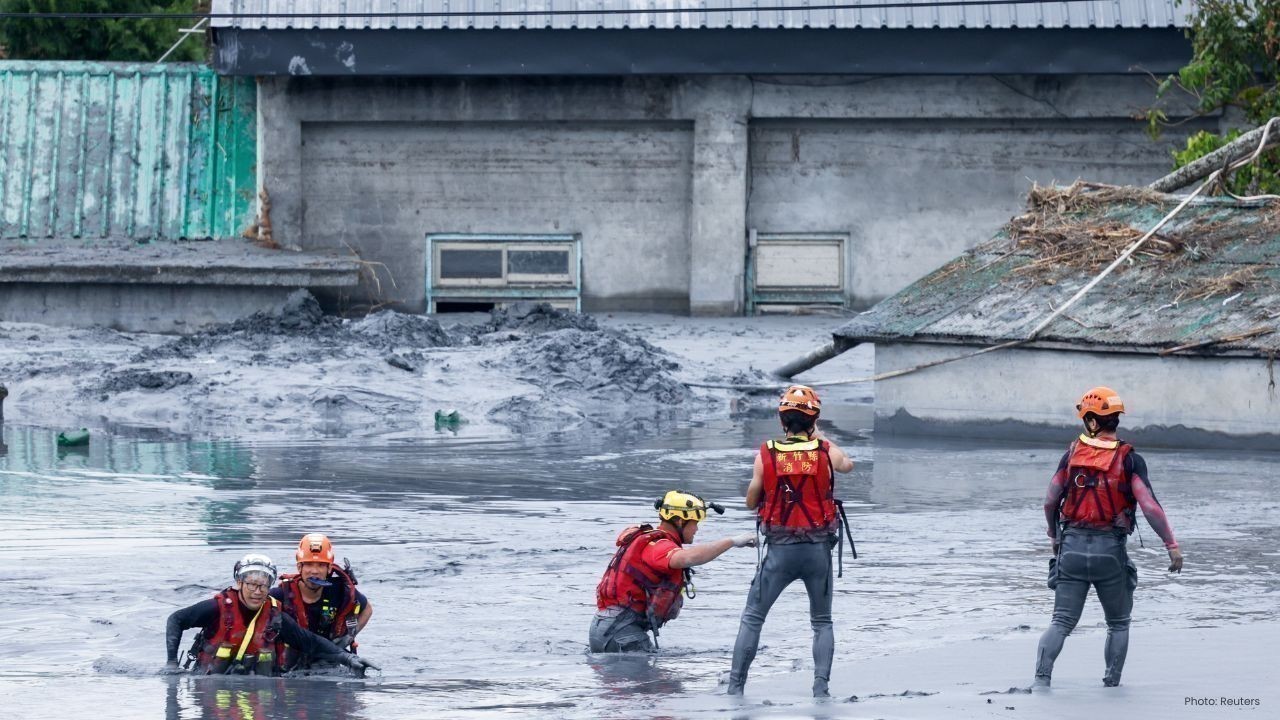
Post by : Zayd Kamal
The desert is one of the most extreme environments on Earth, with scorching daytime heat, freezing nights, and a variety of wildlife that can pose serious risks. Whether you are traveling through a desert for adventure or find yourself stranded unexpectedly, knowing how to survive in the desert and stay safe from heat and animals is essential. With the right knowledge and preparation, you can endure even the harshest conditions and ensure your safety in this unforgiving landscape.
Water is the most valuable resource when it comes to survival in the desert. Dehydration can set in quickly, leading to dizziness, fatigue, and even heatstroke. It is important to carry enough water before entering a desert and drink regularly, even if you do not feel thirsty. Gulping large amounts at once can cause your body to lose water faster, so small, consistent sips are more effective. If you run out of water, conserving energy is crucial to prevent excessive sweating. Staying in shaded areas, limiting movement during the hottest part of the day, and breathing through your nose instead of your mouth can help slow dehydration.
Exposure to direct sunlight for long periods can cause severe sunburn, dehydration, and heatstroke, which can be life-threatening. Finding or creating shade is essential to survival. If there are no natural shaded areas like trees or rock formations, you can use a tarp, backpack, or even clothing to block out the sun. The hottest hours of the day, between 10 AM and 4 PM, are the most dangerous, so it is best to remain in shaded areas during this time. Digging a small trench in the sand can also help provide cooler ground to rest on, reducing body temperature and preventing overheating.
Many people believe that wearing minimal clothing in the desert will help keep them cool, but the opposite is true. Loose, long-sleeved clothing made of breathable fabric such as cotton helps protect the skin from sunburn while keeping the body cool by allowing sweat to evaporate. Light-colored clothing reflects the sun's rays, further reducing heat absorption. A wide-brimmed hat and sunglasses are essential to protect the face and eyes from the intense sunlight. Covering exposed skin also helps prevent insect bites and reduces the risk of coming into contact with harmful desert plants.
Losing your way in the desert can be extremely dangerous, as there are few landmarks and distances can be deceiving. If you need to travel, it is best to do so during early morning or late evening when temperatures are lower. Leaving clear markers behind, such as arranging rocks in a pattern or drawing lines in the sand, can help you keep track of your path. A GPS device, compass, or detailed map is essential for navigation, and it is important to avoid wandering aimlessly. If you believe you are lost, the best option is to stay in one place and make yourself visible to rescuers rather than risk moving further into unknown territory.
The desert is home to a variety of animals, including venomous snakes, scorpions, and spiders, which often hide under rocks, in crevices, or beneath the sand. To avoid bites or stings, always check your surroundings before sitting or placing your hands on the ground. Shake out your clothing and shoes before wearing them, as small creatures may have taken shelter inside. At night, sleeping on an elevated surface such as a rock or inside a sleeping bag can help reduce the risk of an encounter. If you come across a snake or scorpion, stay calm and back away slowly. Most desert creatures avoid human contact and will not attack unless they feel threatened.
Although deserts are extremely hot during the day, temperatures can drop dramatically at night, sometimes reaching freezing levels. Building a fire provides warmth, deters animals, and serves as a signaling method if rescue is needed. Gathering dry branches, brush, or small twigs before nightfall is important, as finding firewood in the dark can be difficult. If matches or a lighter are unavailable, using a magnifying glass to focus sunlight on dry material or striking rocks together to create sparks can help start a fire. Keeping the fire burning throughout the night can make survival in the desert much more manageable.
If you run out of water, locating a source becomes critical. Some of the best places to look for water are areas with vegetation, as plants often indicate underground water. Animal tracks may also lead toward a water source, and shaded areas such as canyons or rock formations sometimes collect small amounts of moisture. Digging in dry riverbeds can sometimes uncover water beneath the surface. In the early morning, dew forms on rocks and plants, which can be collected using a cloth and wrung out into a container. Even small amounts of water can make a significant difference in survival.
If you are lost and need rescue, signaling for help increases your chances of being found. Using a mirror or any reflective object to catch sunlight and direct it toward passing aircraft or distant locations can draw attention. A smoke signal from a fire is another highly visible method. Drawing large symbols or messages in the sand with rocks or sticks can help rescuers spot you from above. Wearing bright-colored clothing and moving to open areas can also make it easier for rescue teams to locate you. Staying in one place is usually the best strategy, as it conserves energy and increases the likelihood of being found.
Exerting too much energy in the desert can be extremely dangerous, as excessive sweating leads to faster dehydration. Moving slowly, taking frequent breaks, and staying in shaded areas as much as possible can prevent unnecessary energy loss. Limiting physical activity during the hottest part of the day and traveling only when temperatures are lower can greatly increase the chances of survival. Since the body loses water even while breathing, it is important to remain calm and avoid unnecessary movement to reduce fluid loss.
Panic is the worst enemy in a survival situation. When faced with an emergency, it is essential to stay calm, assess the surroundings, and make logical decisions. Fear can lead to impulsive actions that waste energy and put you in greater danger. Conserving strength, maintaining a positive mindset, and focusing on survival strategies increase the chances of making it through the situation safely. Keeping a clear head and using available resources wisely is the key to survival in any desert emergency.
Surviving in the desert requires proper preparation and knowledge to combat extreme heat, dehydration, and dangerous wildlife. The key to how to survive in the desert and stay safe from heat and animals is staying hydrated, conserving water, and finding shade to prevent heatstroke. Wearing loose, light-colored clothing helps protect against the sun, while smart navigation prevents getting lost. Desert wildlife, such as snakes and scorpions, should be avoided by checking surroundings and shaking out clothing. Building a fire at night provides warmth and protection, while signaling for help increases chances of rescue. Conserving energy and staying calm are essential to survival, ensuring safety in one of the harshest environments on Earth.
This article is for informational purposes only and does not substitute professional survival training. DXB News Network is not responsible for any injuries, losses, or damages resulting from reliance on the information provided. Always seek expert guidance and take necessary precautions before traveling to extreme environments.

Pakistan Beats Bangladesh to Reach Asia Cup Final
Pakistan edged Bangladesh by 11 runs in a thrilling Super Fours clash, setting up an Asia Cup final

Taiwan Flood Rescue Continues After Typhoon Ragasa
11 still missing in Hualien as Typhoon Ragasa leaves 14 dead and thick mud blocks rescue efforts in

SpaceX Launches 24 Starlink Satellites from California
SpaceX launches 24 more Starlink satellites from Vandenberg Space Force Base, expanding its constell

Sheikh Mohammed Hosts Dubai Leaders at Al Mudaif Majlis
Sheikh Mohammed bin Rashid meets Dubai dignitaries, investors, and officials, highlighting community

UN Adds 70 Firms to West Bank Settlement Blacklist
UN blacklists 70 companies for human rights ties to Israeli settlements, raising global attention on

Shadows of Truth: Elias New Book Inspires Hope
Elias launches “Shadows of Truth: A Life in Prison,” a powerful new book blending poetry, resilience

Wall Street Rises After Trump Announces Pharma Tariffs
US stocks rise as Trump unveils new tariffs on pharmaceuticals, furniture, and trucks, while global

Biggest Movies Releasing in 2025: Hollywood, Bollywood & Beyond
The year 2025 promises to be an exciting one for movie lovers worldwide. With blockbusters, sequels,

Best Vegetables to Control Blood Sugar & Manage Weight After 40
Discover the best vegetables for people over 40 to control blood sugar support weight management a

7 Best Low Calorie South Indian Foods for Healthy Weight Loss
Discover 7 low calorie South Indian foods like idli dosa and sambar that help weight loss while ke

Healthy Breakfast Ideas for Diabetes Delicious Meals to Control Blood Sugar
Delicious, healthy breakfast ideas for diabetes to keep blood sugar steady and boost energy every mo

Nutrition for Healthy Eyes Top Foods and Tips to Keep Your Vision Strong
Protect your eyes naturally with essential vitamins minerals and foods Simple tips to keep your visi

Best Educational Cartoons for Kids Fun & Interactive Learning for Young Minds
Discover the best educational cartoons for kids that make learning fun boost creativity and teach

7 Best Vegan Protein Sources for Daily Diet Healthy Plant Based Foods for Energy & Strength
Discover 7 vegan protein sources like lentils quinoa & tofu to boost energy build strength and suppo

Fashion and Neuroscience How Clothing Shapes the Brain Emotions and Confidence
Discover how fashion and neuroscience connect Learn how clothing colors and style influence mood